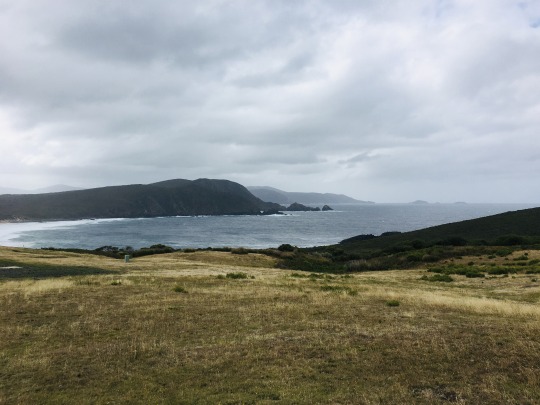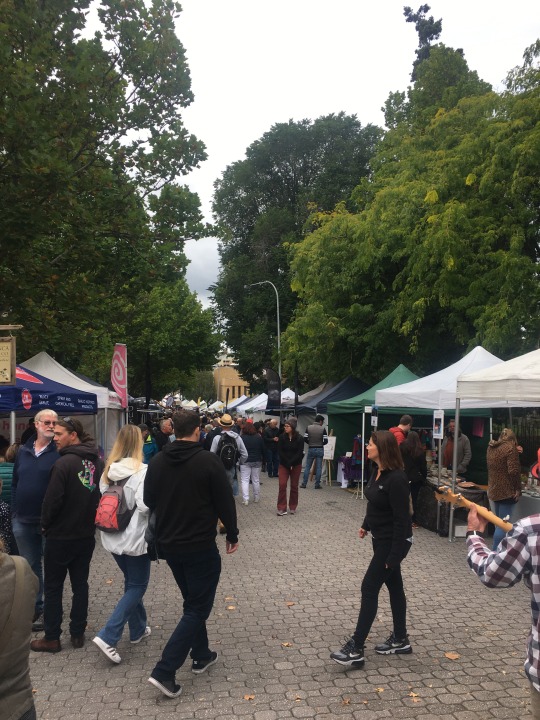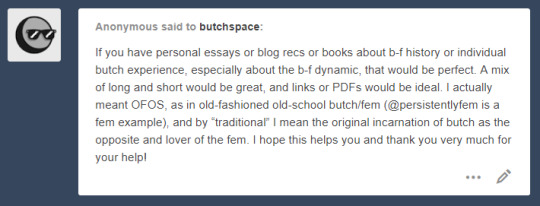#unfortunately my range of historical interests is both wide and extremely specific
Explore tagged Tumblr posts
Note
12, 23, 24 for the history ask?
12. Would you take part in reenactment? In what era and as whom?
I technically already do! I do a Napoleonic light infantry. Not as any actual historical figure but I do get to keep making up the most ludicrous and wild backstory whenever I talk to the public. If I wasn’t doing this, I’d want to do Napoleonic naval (there’s literally no one I’d be suited to be) or Edwardian/WWI (again — no one specifically I could possibly pull off). Honestly, I’d love to do English civil war or Saxons because SWORDS (and no gunpowder license!). Anything with swords.
23. Favourite historical song with such reference?
I do have a few? Northwest Passage will always be a banger. Horse Soldier as well. There’s also one that was written by one of the gents in my re-enactment regiment and a sea shanty group recorded it. It’s about an actual person who was in the regiment and well, he died. It’s a ballad about him, The Ballad of Phillip Glass. It only exists on CD, nobody’s digitised it rip 13 Miles is also another one written about a specific event no one really knows about! Also, The Handsome Cabin Boy. Battlefield Dance Floor is also a BANGER. 10/10 recommend.
24. Most underrated historical figure?
Hannah Snell, lady tar. I wrote a stage play based on her! But also John Paynter. I’m honestly kicking myself because I know in two hours I’ll remember so-an-so and wish I’d remembered sooner lol
#thanks for the ask!#I’m gonna be so mad when I remember’OH why didn’t I mention [insert person]#unfortunately my range of historical interests is both wide and extremely specific
6 notes
·
View notes
Text
I took historical sword-fighting lessons to make the fights in my novel more realistic - here’s what I learned.

Edit: Whew, this blew up! Stoked so many of you find this useful. :) Leave me a follow if you like, I’ll try to make more research posts like this (next one will probably be about my meeting with a linguist for a fictional language).
To make the fighting scenes in my low fantasy novel more realistic, I went to see a trainer for historical sword-fighting last week, both to barrage her with questions and to develop realistic choreographies for the fight scenes in the novel. Since I figured some of what she told me might be useful for you too, I put together a small list for you. Big thanks to Gladiatores Munich and Jeanne for making time! (Here are some more pictures if you're interested.)
Caveat: I’m by no means a sword-fighting expert myself, so take these nuggets with a grain of salt – I might have misremembered or misinterpreted some of the things Jeanne told me. If I did, feel free to tell me.
1.) Weapon choices need to make sense
Let’s start with a truism: always ensure your character’s weapons make sense for a.) their profession, b.) their cultural background and c.) the environment they’re going to fight in. A farmer probably couldn’t afford a sword and might use a knife or threshing flail instead, and someone who doesn’t want to be noticed probably wouldn’t be milling about sporting a glaive or another large weapon. Also, soldiers native to a country with wide open plains would be more likely to carry long-range melee weapons such as spears or large swords, than those from a country consisting of mostly jungle or dense forests. The same applies to situations: if your character is going to be fighting in close quarters (even just a normal house), he’d get little value out of a spear or even a longsword, as there’d be no space to swing it effectively.
2.) Boldness often beats skill
In real swordfights, recklessness was often more important than technique. The fighter less afraid of getting injured would often push harder, allowing them to overpower even opponents with better technique.
3.) Even a skilled fighter rarely stands a chance when outnumbered
While a skilled (or lucky) fighter might win a two-versus-one, it’d be extremely unlikely for even a single master swordsman to win against superior numbers, even just three and if they’re below his skill level. The only way to plausibly pull this off would be to split the opponents up, perhaps by luring them into a confined space where you could take them on one by one. The moment you’re surrounded, you’re probably done for – because, unlike in Hollywood, they wouldn’t take turns attacking but come at you all at once.
4.) Dual-wielding was a thing
... at least in some cultures. I often heard people say that people using a weapon in each hand is an invention of fiction. And while my instructor confirmed that she knew of no European schools doing this—if they did, it’s not well-documented—she said it was a thing in other cultures. Example of this include the dual wakizashi in Japan or tomahawk and knife in North America. However, one of the biggest problems with the depiction of dual wielding in novels/movies/games are the “windmill”-type attacks where the fighter swings their weapons independently, hitting in succession rather than simultaneously. Normally you’d always try hitting with both weapons at once, as you’d otherwise lose your advantage.
5.) Longswords were amazing
Longswords might seem boring in comparison to other weapons, but they were incredibly effective, especially in combat situations outside the battlefield. The crossguard allowed for effective blocking of almost any kind of attack (well, maybe not an overhead strike of a Mordaxt, but still), the pommel was also used as a powerful “blunt” weapon of its own that could crack skulls. Though they were somewhat less effective against armored opponents, the long, two-handed hilt allowed for precise thrusts at uncovered body parts that made up for it.
6.) “Zweihänder” were only used for very specific combat situations
Zweihänder—massive two-handed swords—were only used for specific purposes and usually not in one-on-one combat as is often seen in movies or games. One of these purposes was using their reach to break up enemy formations. In fact, one type of two-handed sword even owed its name to that purpose: Gassenhauer (German, Gasse = alley, Hauer = striker)—the fighters literally used it to strike “alleys” into an enemy formation with wide, powerful swings.
7.) It’s all about distance
While I was subconsciously aware of this, it might be helpful to remember that distance was an incredibly important element in fights. The moment your opponent got past your weapons ideal range, it was common to either switch to a different weapon or just drop your weapon and resort to punching/choking. A good example of this are spears or polearms—very powerful as long as you maintain a certain range between you and your opponent, but the moment they get too close, your weapon is practically useless. That’s also why combatants almost always brought a second weapon into battle to fall back one.
8.) Real fights rarely lasted over a minute
Another truism, but still useful to remember: real fights didn’t last long. Usually, they were over within less than a minute, sometimes only seconds ��� the moment your opponent landed a hit (or your weapon broke or you were disarmed), you were done for. This is especially true for combatants wearing no or only light armor.
9.) Stop the pirouettes
Unfortunately, the spinning around and pirouetting that makes many fight scenes so enjoyable to watch (or read) is completely asinine. Unless it's a showfight, fighters would never expose their backs to their opponent or even turn their weapon away from them.
10.) It still looks amazing
If your concern is that making your fight scenes realistic will make them less aesthetic, don’t worry. Apart from the fact that the blocks, swings and thrusts still look impressive when executed correctly, I personally felt that my fights get a lot more gripping and visceral if I respect the rules. To a certain extent, unrealistic and flashy combat is plot armor. If your characters can spin and somersault to their heart’s content and no one ever shoves a spear into their backs as they would have in real life, who survives and who doesn’t noticeably becomes arbitrary. If, on the other hand, even one slip-up can result in a combatant’s death, the stakes become palpable.
That’s about it! I hope this post is as helpful to some of you as the lessons were to me. Again, if anything I wrote here is bollocks, it’s probably my fault and not Jeanne’s. I'll try to post more stuff like this in the future.
Cheers,
Nicolas
#research#sword fighting#medieval#fantasy#writeblr#writing#dreams of the dying#writing research#real#writingtips
46K notes
·
View notes
Text
My 7-day Tasmania Itinerary
Tasmania is such a beautiful travel destination! I recently spent a week there and absolutely loved it. Aside from pre-planned group bookings, I didn’t find much in the way of solo travel itineraries, so I took a bit out of all the posts I found and created my own. I have to say, I thought it was near perfect! I decided to rent a car for the week, but if you have your own and take the ferry over, that works too.
So if you’re planning a trip to Tassie, have a look over my plan.
Day 1 - Hobart
Your first day can be spent just exploring Hobart and the surrounds. As it’s not a large city and the airport is so close, it’s possible to see quite a few things even if you only have half a day.
In terms of accommodation, Hobart is not lacking in anything. I would definitely recommend a stay in Rose Bay, which is not in the Hobart city centre, but across the bridge on the opposite side of the Derwent river. It’s a few minutes’ drive out of the city and you get the most spectacular views of the Tasman bridge and the river.
While driving around Hobart and around the city, make sure to head up to Mount Wellington. This is a must-see and probably the easiest and cheapest thing you’ll do. It’s completely free to go up to the viewpoint and you can drive the entire way. I drove at a leisurely pace, stopping a few times to take pictures and take in the scenery, which probably took me about a half hour. The view from the top is breathtaking and you can wander around there for a bit. Just remember to take warm clothing as it’s freezing at the top!

Once you’ve been up Mount Wellington, head to the Botanical Gardens. Entry is also free and the gardens are stunning. They have a wide range of plant species, a cafe and shop and their very own Japanese Garden. If you’re wanting some peace and quiet in nature, this is the place to go.

For dinner, Hobart has many options. As a vegan, I love supporting businesses that are entirely veggie, which is why I ate at Veg Bar a few times. To be honest, it’s not the greatest vegan food I’ve had by a long shot, but it’s worth a visit, if only to enjoy the funky decor.
Day 2 - Bruny Island
Since driving a lot can get tiring, I recommend doing the things that require the longer drives at the beginning of your week. Trust me, you’re not really going to be in the mood for them towards the end. To catch the ferry to Bruny Island, an absolute must-see when in Tassie, you have to drive about 30-40 minutes to Kettering. The ferry takes about 15 minutes and departs at multiple times throughout the day. The island itself is actually really large with no public transport, so prepare to spend the majority of your time driving.
If you’re keen to get that Bruny Island lighthouse photo everyone loves, I recommend doing that as your first thing. It’s the furthest away from where the ferry docks and the road takes you through the South Bruny National Park. It’s gorgeous but be careful on the dirt roads as your tires can slip easily depending on your car. I think it took me roughly 2 hours to get there.
I am not ashamed to admit that, as an introvert, I despise large crowds and will almost always avoid them. I did not get that typical lighthouse pic, because it started raining just as I got there, there were heaps of people and it’s still quite a climb from the carpark up to the lighthouse. I walked halfway up, took an average pic of the lighthouse, and went back down. Keep in mind that you have to pay an entry fee to actually go into the lighthouse. I still think it was worth the drive, though, because the scenery there and along the way is absolutely beautiful.

Aside from the lighthouse, there are plenty of other things to see and do on Bruny Island. Wine tasting, chocolate tasting, whiskey tasting, cheese tasting, lunches (my recommendation is Bruny Island Seafood Restaurant for great seating and a delicious pumpkin soup) and many other options. Build those into your itinerary however you’d like. If you’re exploring the island the way I did, starting right down at the bottom, I recommend heading over to Adventure Bay next.
On your way back up to the north of the island, make sure to stop at the Neck. This is the part that connects the south and north of Bruny Island. Climb up the stairs to the lookout point and get that iconic view of both beaches!

The reason I did this later in my day was that there are a lot less people around than in the morning, so you can actually find parking and enjoy the view without a million people around you.
Day 3 - Bay of Fires
For two days of my trip I did actually book a guided tour. I know this is not always the most appealing to introverts, but I highly recommend you push yourself to do it. There are plenty of tours to choose from, most of them doing roughly the same thing and they tend to keep groups to a maximum of 24 people. In my case I was very lucky, as they’d somehow overbooked their tour and organised a smaller bus for just 7 of us. The people in my tour were all absolutely lovely, and our guide was excellent, so it worked out really well for me.
Either way I’d still recommend booking an East Coast Tasmania tour as getting all the way up to the Wineglass Bay and the Bay of Fires would be tricky as a solo traveller. This is really where you want to be taken care of, and I also enjoyed the break from having to drive for hours.
Have a look at some Tassie tours here.

I realise that for these two days my rental car was not being used, but the daily price was not high enough for me to care too much about this. If this is something that bothers you, change up your itinerary a bit. Keep in mind that booked tours run on specific days only, so you’ll have to plan around that. The 2-day East coast tour I booked starts on Wednesdays.
Part of the tour is also a stop at a wildlife sanctuary in Bicheno, where you can see and learn about Tasmanian Devils, Wombats, Quolls and other interesting animals. Buy a feed bag and go feed the kangaroos and geese wandering freely around the sanctuary, it’s an amazing experience!

Day 4 - Wineglass Bay
The second day of the tour takes you to the Freycinet National Park, where you’ll climb up to a viewpoint to look out over Wineglass Bay. This is another iconic Tasmanian image that’s worth the hike up the mountain. Make sure to wear suitable footwear and be reasonably fit!
Unfortunately, I visited on one of those extremely rare, extremely rainy days and did not get to see the view from the lookout, but honestly the walk was still fun. I got completely soaked through within minutes (imagine jumping into a swimming pool fully clothed) and there were waterfalls running down the mountains. Considering that this rarely ever happens, I felt quite lucky to have seen a side of Freycinet that most people don’t.

I’m not sure if this applies to me only or if all introverts can relate, but I love the rain. It’s my favourite weather because the world is so much less noisy when it rains. So overall, for me, this was still a great experience.
On a normal, sunny day you’d probably take a nice hike up to the viewpoint, take some pics and then go down to the actual beach of Wineglass Bay for a swim. This would take a few hours and you’d see wallabies and other animals in the park. You’d then head back to Hobart in the afternoon.
Day 5 - Port Arthur
Port Arthur Historic Site is a little village and historic site which showcases the history of British prisoners and the officers and soldiers stationed there. It’s really well kept and you get a good feeling of how life was back when it was operational. I unexpectedly spent almost all day here as it’s really big and there is just so much to see. Tickets aren’t cheap and additional tours cost extra, but even if you just get general admission it’s worth it. The ticket is valid for 2 days, so you do have the option to return the next day.
The site is about a 90-minute drive out of Hobart, and it’s definitely worth a visit!

Day 6 - Salamanca Market, MONA
Most people agree that a trip to Hobart wouldn’t be complete without visiting the famous Salamanca Market. This market sells everything from fresh veggies to jewellery to delicious food and drinks. My first stroll through the market took about an hour, that’s how big it is. It’s held every Saturday at Salamanca Place from 8:30am - 3pm. There are some great vegan options if you’re like me and like to eat your way through a market!

If you’re into art, then check out the MONA (Museum of Old and New Art). It’s one of Hobart’s main attractions, a museum built mostly underground that you can get to using their unique ferry. If you’re on a budget just keep the entry and ferry prices in mind, as they’re not cheap.
The museum is like no other you’ve ever experienced. You won’t find information cards or artists’ names on the walls beside their art, as you’d expect. Instead, you’re given a device (like an old iPhone) that you keep with you as you walk through the exhibits. It has a location service so you can check out any information on anything you’re looking at, including interactive VR stuff. It’s definitely very interesting, but I must admit there were times where I thought “this counts as art?”, but that’s just me. The nice thing is it’s mostly dark everywhere and you don’t have to talk to anyone, so a great thing to do for introverts.

Day 7 - Richmond
I recommend relaxing or doing any small things you didn’t get to do all week on your last day. A tip my AirBnB hosts gave me was a drive to Richmond, a small town about 25 minutes outside of Hobart. It’s got that typical cute, old-timey village feel. There’s a huge lolly shop with so many candy options, the Richmond Bridge which is the oldest stone bridge in Australia, and the Richmond Gaol where they also imprisoned women. For lunch I recommend Czegs’ Cafe. The decor is adorable and they have little outside tables where you can keep away from the masses. The vegan pasta is to die for!

I really hope this little itinerary helps you in your search for the best things to do in Tassie. If you have more time, I hear Launceston is a great place to visit, or even going up the West Coast. I’ll have to check that out the next time I go.
#tasmania#hobart#itinerary#travel#veganfood#solotravel#introvert#vegan travel#selfdriving#introvert travel
1 note
·
View note
Note
do you mind talking about why you dislike Love Actually and Richard Curtis's romcoms? I've seen you mention it in some of your tags and I'd love to hear your thoughts :)
Long post, so scroll now, ye who care not.
OK, so like better voices than mine have articulated Why Love Actually Sucks Balls, but you were kind enough to ask for my view, so strap in I’m gonna talk about Jane Eyre, and the 1990’s Fran Drescher sitcom The Nanny also. It’s coming up on western civilisations’ holiday season, so why not, it’s a good time to tell this movie to choke, because it’s about to be repeatedly thrust upon us once again. (Disclaimer: I acknowledge Richard Curtis is responsible for Blackadder and Vicar of Dibley, so whatever else, we’re still cool on that basis. But I have spite and to spare, so there’s plenty to go around).
My main beef is actually the context. Technically, if all of the below bullshit was in an offbeat movie from any other movie market (I’m thinking maybe a French, or Spanish movie from the 90′s boom, Almodovar style?), the focus would probably be a black humour take on ‘Lord What Fools These Mortals Be!’, sort of look at the inherent ridiculousness of mankind, and how we get in our own way, blah blah, might have been cute. I’d buy that. This movie? A british movie for the american market? It’s sold with a big holiday sticker on it saying ‘ROMANCE’, and specifically ‘ADORABLE ASPIRATIONAL ROMANCE THAT YOU SHOULD ADORE AND ASPIRE TO’. Also the context *inside* the movie itself (through a narration voiceover no less) is that all of these narratives is somehow proof that ‘Love, Actually is all around’, and specifically in a good, wholesome, happy way, overall at least. These stories are redeeming, even if they’re not all happy, they’re Good™ or whatever. The context outside the movie is the same: british TV advertising, hard copy packaging, holiday specials, outdoor gala screenings: they all say over and over: THIS IS SQUISHY HOT PINK NEON LOVE, wholesome, healing, and healthy. You should want this, aspire to this, think this is the cat’s pyjamas! It’s a wide and varied look at the beautiful power of love from all angles, comic, tragic, the lot.
Is it fuck. The ‘positive’ romance stories range from Stage-5 Creeper to Crotch Puppet Afterthought, the ‘melancholy’, thwarted romance stories seem to say ‘if you’re a woman who’s not readily/immediately bangable to your allocated straight dude, romance is over for you I’m afraid’. Let’s recap, shall we:
Much has already been said about Andrew Lincoln’s character BLANTANTLY SHARKING ON HIS BEST MATE’S WIFE being uhhh, less than fresh. I don’t even feel like I need to justify this one, it’s so over-the-top. The main point is that movie itself maintains this as a tragic, swoony, thwarted, heart-string-tugging missed connection, rather than The Worst Friend Ever (meaning: it assumes we’ll be 100% onboard with Keira Knightley skipping secretly away from Chiwetel Eijiofor to grant his best mate one treasured kiss, as opposed to saying ‘what the FUCK Mark, why are you telling me this, this is super inappropriate?? and my only wedding video is just you zooming in on my face? Pls get help’.
We all love National Treasure Colin Firth and all, but like is Love, Actually fixating on a woman who literally can’t speak to you? Has said nothing understandable to you? About whose own life you’ve never yet, and could never have asked about? Whose main interactions with you have been to wordlessly clean your room, bring you food, and tidy it away after? Your ideal woman, who you meet immediately following a break up, is one who silently meets all your domestic needs, while making zero emotional or intellectual demands on you whatsoever? WOW, SHOCKER. (Oh but it’s cute or whatever, they have him propose, and there’s a mix up when her sister appears, but she’s Ugly™, so it’s funny that the sister is not getting romance. I mean, how could she, an uggo?? Classic joke. Good times.)
The Prime Minster and his tea lady: more on Curtis’ Domestic Servitude Kink below, whoo boy.
Laura Linney would really really like to sleep with Rodrigo Santoro, and god bless her who wouldn’t, but she is tragically unable to, because she has family commitments as being the sister – not even fulltime carer, just RELATED TO - a brother living with disability. Sorry folks, romance is OFF THE CARDS, FOREVER for Laura here. How can she??? That’s the nature of love, actually. Can you have sex right now this moment? No? Whelp, sorry, thanks for playing, back to the Tragic Assisted Living facility for you. Gosh it’s unfortunate that’s a truth universally acknowledged that any whiff of disability = no romance for you ever. (Don’t start me on 4 Weddings* [edit: *it’s totally Notting Hill, not 4 Weddings, thank] and how that husband is like The Best because he continues to love his wife even though her legs don’t work. What a champ, honestly, do they have an award for that?) I have to stop now before I get sarcasm poisoning, but my eyes will continue to roll.
How could I say anything bad about the Liam Neeson widower and his adorable lovestruck son storyine? Lol, I’m gonna. Have you seen the Buffy episode The Zeppo? Xander is convinced the only way girls (as a concept, not in the specific) will like him enough to sleep with him is if he has A Thing. The Thing is posited as ‘being cool’ by having an object or skill that alone will be the magic bullet to romance. Musical instrument prowess is considered, and he ends up just getting a car to be his Thing. This just seems like a redux of that logic. This kid could get some genuine direction from the movie to get to know this girl, learn her interests and share his, see if she likes him as a person by being A PERSON, but the narrative just backs away from that and eventually DOES just say ‘play the drums in the show, she’ll like you’ and that’s …it. But it’s cool, teenagers don’t learn key interpersonal dynamics at this age or anything, she kisses him for some reason, whatever. (Bonus points for gifting his dad with a literal supermodel as a punchline, after making that an actual joke earlier about the shallow nature of attraction, and love is about filling a one-sided need.)
I could go on, but I have very little to say about Freeman falling for a girl whose tits he’s been holding for a week, the no-homo pop star Nighy plot, or the guy that goes and has sex in Wisconsin with Bond Girls, and can’t be bothered, which leads me to…
Richard Curtis’ Domestic Servitude Kink. Must I kinkshame Richard Curtis in his own home?? Nope, I’m kinkshaming him AT WORK in his narratives, surrounded by his nubile, pliant, adorable female employee characters. Oh Mr Curtis, I seem to have dropped a pencil!
OK, so like a M/F Domestic Servitude romance is an extremely old trope, and extremely common, and I’m not here to tear that up, because done well it’s amazing, lot of petrol in that King Cophetua narrative tank. I’m a fan. The most famous in-context historical example being Jane Eyre, for instance: he’s her boss, she’s his paid subordinate, they’re both 100% aware of that. It’s a great way to explore the real-life class and power dynamics of these 2 train wrecks of human beings, and they vomit their ridiculous drama llama feelings all over a 600 page novel. Super fun, they’re both awful humans, I love them. Mid-century you might have The Sound of Music, and in more modern times you get 1990s sitcom The Nanny, both extremely well-developed romances involving paid employees, and part of their value is that the shows KNOW THIS. They’re aware it’s the basis for their dynamic, that they have to directly play with that, and develop beyond to go anywhere. Watching Fran Fine in her runway-fresh Moschino minidresses jump on Maxwell Sheffield’s desk for the 800th time making him super uncomfortable (and not a little turned on) is always such a treat. It’s right out there on the label. The problem with Love, Actually, is Curtis doesn’t want to admit that naughty secretary seems to be a cornerstone of what gets him going, romantic-stylez.
One (1) time in the movie would be ‘sure, why not’. Literally the highest political office in the land, making overtures to the woman who brings him tea, i guess might be a bit off, but let’s say it’s done well, and maybe Hugh Grant and Martine McCutcheon’s charisma gets us over the line (his behaviour is cute because her last man didn’t like her body, but the prime minister DOES like her body! so it’s cute!). Whatever, seen worse. Two (2) times however is making a point, and Colin Firth is driving his silent portuguese maid home - not a french maid but so close! - and deciding he’d like her to bring him tea and clean his toilet for as long as they both shall live, and that also seems to be her greatest joy. Ah, l’amour. OK, I guess you like the thing, everyone has a thing, but at least you’re done now. Wait, you mean there’s a third (3rd) one? Everyone’s Fave Alan Rickman drives the plot of his own marriage’s tragic romance because he’s having stiffening feelings about his own Naughty Secretary halloween costume, after all. All the beautiful speeches about Joni Mitchell give Thompson some nice things to do, but it still assumes the Nature of Romance is to want to plough the help. A man can’t help it! It’s how romantic attraction works! Once would be whatever. Three times and there’s a tag on Ao3 for that, so please just scratch that itch and stop selling it to me in a heartwarming christmas movie as the Universal Nature Of Romance, so varied, so vast, the full spectrum! Just 2 hours to tell a story: but 3 whole narratives and 7 actors devoted to the variants on the naughty maid story. My point is be upfront about it and I’d be all for it - pretend it’s not A Thing You’re Doing and my creep-meter goes ping. Steven Shainberg’s ‘Secretary’ has a scene where the boss literally puts a saddle on his employee, and I find it to be one of the most genuinely moving romances I’ve ever seen. Love Actually makes me feel like Curtis is sending me a ‘u up?’ late night text about his secretary fantasy.
Anyway, I fucking hate this film, and not necessarily because of the content, but because of the context. The movie tells me to love it as aspirational romance. My culture tells me to love it as aspirational romance. Everyone tells me to love it as a varied and full exploration of reasons to get up in the morning, because it’s an aspirational romance. It makes me want to claw my own face off.
#replies#long post#ishipallthings#that kid in the octopus costume can't save it#look no judgement if you like it - whatever floats your stoat - but it's uhhhhh not for me
404 notes
·
View notes
Text
Butch-Fem History / Butch Identity Reccs

[Image description: an anonymous ask to butchspace that reads “If you have personal essays or blog recs or books about b-f history or individual butch experience, especially about the b-f dynamic, that would be perfect. A mix of long and short would be great, and links of PDFs would be ideal. I actually meant OFOS, as in old-fashioned old-school butch/fem (@persistentlyfem is a fem example), and by “traditional” I mean the original incarnation of butch as the opposite and lover of the fem. I hope this helps you and thank you very much for your help!” End ID.]
Okay so! I’ve got sucked into making this post and I’m just gonna go ahead and publish before I add even more on and forget to sleep again. Putting it under a cut because of length, if anyone wants a non-readmore version of the post just let me know.
Caveats:
I focused mainly on works I could provide links to; this means that what I’ve provided isn’t necessarily my first pick, but it’s still some good stuff so whatever. (See the Offline/Extended section for more reccs.)
A lot of the pdfs were transcribed in the course of a sleepless night so there’s bound to be typos; if you wanna tell me about them just message/ask @holzes to avoid clogging this inbox up.
Sadly, most of these works are dominated by white, cis, and able-bodied perspectives. This is especially something I want to remedy in the future in my additions.
It should go without saying, but: I don’t endorse every single opinion in these works or their authors (who for the most part I know little about), they don’t necessarily align with my own views and/or preferences, and I recognize that some of them have issues such as cissexist language and framing (see Content Warnings for more detail). Unfortunately when it comes to LGBT history, a lot of the most prominent texts are outdated or otherwise flawed in some areas and you just have to kind of trudge through it and read critically.
I included dates next to the works for a reason! Some (basically everything written in the early to mid 90s) emerged from a specific time in the lesbian community and obviously some of their statements only make sense in that context (mostly the lesbian feminist movement and its aftermath tbh). Just keep this in mind, it shouldn’t matter too much because those texts are history but just in case…
Just because I couldn’t find a work online doesn’t mean it doesn’t exist out there somewhere.
This is a deeply incomplete list. If you have suggested resources like these (preferably ones available online) including books, essays, articles, blogs, films, youtube videos, etc…. Let me know @holzes.
Content Warnings:
The Q slur (in just about every context), D slur, anecdotal homophobia, mentions of homophobic violence, outdated trans terminology, cissexism / cissexist language, discussion of sex (both academic and semi-explicit), cussing, frequent discussion of bars / probably a mention of alcohol once or twice. Sorry for not providing individual content warnings, this post is already bulky enough. If there’s something you’re rlly concerned about just mssg me @holzes and I’ll do my best to help you out.
And with all that out of the way…….. the actual post begins.
History
“Butch-Fem” by Teresa Theopano (2004)
An extremely succinct, balanced overview of butch-fem best suited for absolute beginners (aka, “what the hell is butch/fem” level). Also a good jumping-off point for anyone lacking historical context for butch-fem. Covers origin, application, and controversies. [Link]
“Lesbian Identities and the Politics of Butch-Femme” by Amy Goodloe (1993)
A rigorous essay that in many ways is a more detailed version of the above; packs a wide range of butch-fem history, controversy, and popular interpretation into a relatively short essay. A nice crash course with a killer annotated bibliography to build off of. [Link]
excerpt from Boots of Leather, Slippers of Gold: The History of a Lesbian Community by Elizabeth Lapovsky Kennedy & Madeline Davis (1993)
This excerpt from the introduction explicates the existence of working-class lesbian bar cultures in North America from the 1930s to the 1950s as well as the butch-fem dynamic that accompanied and shaped these cultures. The second section of this excerpt is perhaps best read as a companion piece to The Return of Butch and Femme (see below), especially as relates to Kennedy and Davis’s criticism of Faderman’s attitudes toward butch-fem. The entire book is well worth the read, but if you’re pressed for time, Chapters 5, 6, and 9 will be most relevant for your purposes. [Link to excerpt] [Link to full book]
“The Return of Butch and Femme: A Phenomenon in Lesbian Sexuality of the 1980s and 1990s” by Lillian Faderman (1992)
A thorough examination of how butch-fem became deeply “politically incorrect” through the lens of 1970s lesbian feminism, as well as its persistence throughout that decade and its restoration (and transformation) in the 1980s and 1990s. Perhaps Faderman’s most balanced examination of butch-fem (but don’t worry, she still throws around every anti-butch-fem critique and stereotype that she can justify including) and an informative history of how modern butches and femmes arose and if/how we differ from our predecessors. Read with section two of the above for best results. [Link]
Odd Girls and Twilight Lovers: A History of Lesbian Life in Twentieth-Century America by Lillian Faderman (1991)
Might as well, yeah? The book is a very interesting/enlightening semi-comprehensive history and a groundbreaking work in lesbian history literature. If you wanna cheat, Chapter 7 is the one that focuses primarily on butch-fem. [Link]
Personal Narratives
“Double Trouble” by Lesléa Newman (1995)
A brief personal reflection by a femme on her traditional femme-butch relationship. [Link]
Persistence: All Ways Butch and Femme eds. Ivan E. Coyote & Zena Sharman (2011)
An interesting collection of a broad variety of fem and butch perspectives. Essays range from emotional personal narratives to a mix of historical and personal analysis. I’ve provided links to a few that seem most relevant to your interest.
“Femme Butch Feminist” by Jewelle Gomez [Link]
“No Butches, No Femmes: The Mainstreaming of Queer Sexuality” by Victoria A. Brownworth [Link]
“What We Know to Be True” by Sasha T. Goldberg [Link]
“Spotlight” by Debra Anderson [Link]
Gender Troubles: The Butches (2016, dir. Lisa Plourde)
You might have seen this going around back when it was free to watch for a few months. It’s basically a long string of interviews with a few butches and it’s a nice watch, although I’m not sure how/where you can watch it now. [Link]
Extended (aka Stuff I Haven’t Read Yet and Am Thus Nervous to Recc)
In no particular order,
A Restricted Country by Joan Nestle (1987)
The Persistent Desire: A Femme-Butch Reader ed. Joan Nestle (1992)
I haven’t read either of Nestle’s groundbreaking works because I’m Fake but she’s probably the most influential writer on butch/fem by far so she can not be recommended highly enough.
Zami: A New Spelling of My Name by Audre Lorde (1982)
A biomythography that focuses partially on lesbian bar culture in NYC, Connecticut, and Mexico. The plain text is online if you can work with that. [Link]
Stone Butch Blues by Leslie Feinberg (1993)
This one’s only not in the main section because I figured you already knew about it, since it’s legally free online. It’s a novel, which I learned only recently. [Link]
Final Notes
For further reading and essays/books, I highly recommend digging through the notes/sources of the works I’ve linked above and jotting down anything that looks interesting or that gets mentioned a lot.
In terms of access–if you’re a college student or live in a college town, go to the college library (or public library, although these have been far less helpful for me) and find their LGBT section. Some places might surprise you. If you’re a college or high school student, go to your school library’s webpage and look for any access to databases you might have as a student, and exploit the hell out of whatever you find. If you’re not a student and/or don’t have access to a good library (or cannot use whatever resources you do have due to risk of outing yourself), stick to whatever you can find online.
Finally, I remembered @closet-keys‘s butch/femme research guide shortly after finishing this post. So, here’s that. [Link]
Thank you so much if you made it this far and I hope this answer helps out you, anon, at least a little, as well as anyone else who makes use of it!
-Mod P
#asks#anonymous#butch/femme#butch tag#resources#srry for focusing on written stuff that's just my area of expertise lol#reading#mod p#bluespace /#pebble posts
761 notes
·
View notes
Text
Openssl 1.1

A lot can be learned about SSL/TLS by analyzing real-world bugs and the ways in which vendors patch them. This past week OpenSSL 1.1.1k was released, which corrected two high severity bugs in the popular OpenSSL software. Specifically, CVE-2021-3450 and CVE-2021-3449 are considered to be “high” severity but not “critical” severity because while they are extremely impactful, they affect less common configurations of the software.
Oracle Solaris 11.4 Support Repository Update (SRU) 21 delivers both the OpenSSL 1.0.2 and OpenSSL 1.1.1 versions. These versions are not binary compatible, so software that is compiled with OpenSSL headers and linked with OpenSSL libraries from one version cannot run with the OpenSSL libraries from the other version. I like to provide HTTP/2 support for apache web server and need an updated openssl version. When will openssl version 1.0.2 or 1.1.0 be available on Red Hat Enterprise Linux 7.x? With the release of RHEL 7.4, openssl has been updated to version 1.0.2. We need to install a development tool and few dependencies to install OpenSSL # yum group install ‘Development Tools’ && yum install perl-core libtemplate-perl zlib-devel. Download OpenSSL 1.1.1d. We will download the latest stable version is the 1.1.1 series. This is also our Long Term Support (LTS) version, supported until 11th September. For OpenSSL versions 1.1.0 and 1.1.1, the mingw configuration targets assume that resulting programs and libraries are installed in a Unix-like environment and the default prefix for program installation as well as for OPENSSLDIR should be '/usr/local'.
Both chapters are borrowed from my larger work, called Bulletproof SSL and TLS. In fact, I started to write that book by first writing the OpenSSL chapters, releasing them as OpenSSL Cookbook in 2013. I wanted to do this because there is a serious lack of good and up to date documentation. Openssl cookbook.
CVE-2021-3450
When determining the validity of certificate chains, OpenSSL allows for programmatic “modes” that determine how stringent the rules engine used for determining validity will be. For example, the X509_V_FLAG_NO_ALT_CHAINS flag determines OpenSSL’s behavior after finding an invalid chain. Legacy software used to immediately return false in these scenarios, but it is extremely useful for OpenSSL to continue looking for an alternative valid path, for example, for when a long-lived intermediate certificate expires. (Earlier this year such a certificate from Sectigo expired wreaking havoc across the internet). CVE-2021-3450 specifically involves the flag X509_V_FLAG_X509_STRICT. This flag is off by default, and typically used in extremely controlled deployments where tight security is valued over wide compatibility. This makes this bug unlikely to affect everyday users, but especially unfortunate for software packages which make use of this flag and reach out to an endpoint which does not have the “purpose” field set on the certificate. This unlikely combination of circumstances triggers OpenSSL to not correctly ensure that the issuer is a valid CA.
How to know if I’m impacted by CVE-2021-3450?
This can be a tough thing to ascertain, as even if you update your server’s version of OpenSSL to 1.1.1k, any application has the potential to be statically compiled against libssl’s client or server libraries. The best thing to do is to contact your vendors and ask for their statement on whether they are impacted by this vulnerability. Some companies, such as Redhat, preemptively put out a statement defining impact. (RedHat itself is not impacted because while it relies on OpenSSL and LibSSL, does not set the STRICT flag.
access.redhat.com/security/cve/CVE-2021-3450
RetroArch is a frontend for emulators, game engines and media players. It enables you to run classic games on a wide range of computers and consoles through its slick graphical interface. Settings are also unified so configuration is done once and for all. In addition to this, you are able to run original game discs (CDs) from RetroArch. https://hunterbold234.tumblr.com/post/652906016326942720/retroarch-on-chromebook. And then I heard that it could be possible with RetroArch. The thing is idk anything about how to set it up fully or if it even is possible. Can I get any help here on how to set it up/use it? My goal is to be able to use RetroArch to play Pokemon DS games on my Chromebook. BTW I have a Samsung Chromebook.
CVE-2021-3449
Renegotiation bugs represent a surprisingly large slice of the pie if you look at historical bugs in the OpenSSL software. Over the years errors in implementing re-negotiation have led to man-in-the-middle attacks later collectively termed “insecure renegotiation”. (One particular bug CVE-2009-3555 was so severe that at the time disabling renegotiation entirely and accepting the performance penalty). Later, an extension to SSL/TLS the “renegotiation indication extension” was created which allows for keeping track of certain session information from the original handshake allowing both sides to detect if a bad actor is trying to pass off initial negotiation as if it were a renegotiation, as well as several of the other dastardly tricks in the bad guy’s arsenal.
CVE-2021-3449 is a new way in which re-negotiation causes problems: an attacker can trick servers using TLS 1.2 in the default configuration into attempting to dereference a null pointer by constructing an ClientHello message specifying the signature_algorithm extension, followed by a renegotiation which includes the signature_algorithms_cert extension WITHOUT the signature_algorithm extension. Iss astronauts. These extensions are usually considered part and parcel, so there would be no legitimate reason to do this. Attempting to dereference a null pointer results in the application crashing. This situation crashes the software, usually requiring administrator intervention. Merge excel files in python.
But what is a null pointer dereference? The dereference operator is a common construct in languages like C or C++ which leave memory management to the programmer. A “pointer” is simply an address of a location in main memory (RAM), (truth be told modern systems use ASLR to purposefully obfuscate memory locations but let’s pretend they don’t for a minute). In a language like C, when you’re interested in reading or writing the contents of the memory location, you “dereference” the pointer. It is somewhat similar to resolving a key to its value in a hash table! A null pointer is a pointer with a value of null (Maybe it was instantiated this way with the programmer intending to populate it later before using it, or maybe it was nulled out later). Therefore, putting it all together, a null pointer dereference is what happens when a program tries to get the value at memory address NULL. If it seems shocking that there is no way to prevent this condition from resulting in a error, you must remember that this occurs at such a low level in the stack that there is no way to protect against this except to not tell the computer to do it in the first place! Null pointer exceptions invariably are the result of a condition the programmer does not anticipate.
Openssl 1.1.1 Vulnerabilities
This particular bug is exceptionally easy to trigger. In many cases stopping a service abruptly can have far-reaching consequences – imagine the cascading failures possible on a storage device or a network appliance.
How to know if I’m affected by CVE-2021-3449?
If you are using OpenSSL, you are almost definitely affected! TLS 1.2 is by far the most popular version of TLS, and renegotiation is enabled by default. If your change management process prohibits you from upgrade to OpenSSL 1.1.1k, or if a particular piece of software has not yet released a patch, it might be worth disabling renegotiation entirely. Additionally, any server software built against LibSSL that is statically compiled will need to be recompiled against a version of the library not vulnerable to this availability issue.
Conclusion
Openssl 1.1.0c

Openssl 1.1
There is the potential for any software to have bugs, but OpenSSL is as ubiquitous as it is crucial. The most important take-away is the importance of best network practices and defense-in-depth. When issues like these happen, those most at risk are the ones who expose services to the internet needlessly, lack proper network segmentation internally, or who do not keep up to date on the latest news and threats. Bugs like CVE-2021-3449 are especially unfortunate, because they are attractive to script kiddies. It is extremely likely that in the next few weeks we will see “spray and pray” type attacks over the entirety of the IPV4 and IPV6 public address spaces! It is a good time not only to address these vulnerabilities, but to revisit any services open to the outside world. While it is not appropriate in all circumstances, it is also whether considering whether TLS renegotiation adds value to you and your business, or whether it would be worth disabling permanently and entirely. After all, as of TLS 1.3, TLS renegotiation is abandoned completely, and the receipt of a ClientHello outside of the initial renegotiation results in a severed connection.

0 notes
Text
A New, Nu-Metal
youtube
“Daddy Issues” by Gift Giver can be found here: https://youtu.be/dLkAkWaq5rE I remember it all so vividly, the night I had discovered Detroit-based nu-metal/deathcore band Gift Giver as a high school student. Excited, I had been attending a concert for a more popular headliner to but little did I know the highlight of my night would be a support band I'd never heard of. When Gift Giver began their set, I was skeptical and unengaged until they played their single “Daddy Issues”. Everyone, including myself, seemed to enter an altered state of mind halfway through their performance; as if the whole venue’s dynamics had morphed into something different. “Daddy Issues” by Gift Giver is a uniquely heavy song in the confines of metal. Not only does its distinguished execution of sonic and lyrical heaviness, but its interesting cultural context and powerful affective force on its listeners make it stand out in a somewhat saturated genre.
In order to analyze this track, the reader is invited to listen to it while dedicating special attention to certain highlighted components and segments. Fading in, the listener is immersed in an unnatural dissonant soundscape in the form of a high-pitched drone noise produced by the heavy use of a pitch shifter pedal on a guitar (Kitts et al. 148). This squealing noise played in vibrato is a recurring and significant component of this song; easily compared to the sound of a police siren, it represents a state of panic and chaos. Seconds later heavily down-tuned overdriven guitars backed by steady drumming make an appearance. The guitar tone and rhythms are played very percussively; unlike that of traditional metal they have a very clear-cut, compressed tone influenced heavily by modern djent and deathcore bands such as Meshuggah, Emmure, and Sworn In (“Gift Giver Biography” n.d.). Throughout the majority of the song, the guitarists and bassist (aided by the drummer) play these catchy, rhythm-focused riffs without relevant variation. The tightness of their playing greatly contrasts with that of the siren-like drone; they act as a strong structural back-bone to the instrumental track amidst the chaos. This peculiar dynamic of chaos and order not only provides sonic heaviness to the song, but its more significant role is analogously reinforcing its vocal and lyrical themes of strength through hardship.
Having taken the instrumentals into account, the vocals are evidently the most powerful force behind this track. Gift Giver’s vocalist, Justin Johnson’s style of vocal delivery incorporates a wide range of techniques. From the rap influenced singing (most audible within the first minute) to the constantly disappearing and reappearing gutturals, fry vocals, and screams, the employment of this mixture of technique places an emphasis on the song lyrics. The lyrics are implicitly focused on the themes of bullying and abuse, with the metaphorical abuse of a fatherly figure being explicitly stated. Despite their unfortunate themes, they don’t get across a message of submission nor self-pity. Upon closer inspection, “Daddy Issues” is all about empowerment of the one who suffered—forgiving but never forgetting the attacker who never gave an apology. The emotional climax of this song is perhaps the most instrumentally quiet section: it is the forty-second chant that begins before the two minute marker. Justin asks “Did you think that I forgot? This is what you fucking told me:” followed by a repeated chant taunting “Why don’t you kill yourself? Just fucking kill yourself” (Johnson 2013). Backed by the chaotic drone noise and ordered tightly played guitar breakdown, chanting these highly sensitive phrases provide a sense of empowerment. It can be interpreted as a resistance to submission towards an oppressor who told Justin to commit suicide. The unprecedented and harsh nature of this chant contribute to “Daddy Issues” affective heaviness on a level that distinguish it from other songs of the same genre.
Of course, the historical and social background of a musical piece shouldn’t be overlooked as they indirectly contribute to its creation. Through deduction and a general consensus from music publications, this song, like the rest of the Gift Giver discography possesses many nu-metal and deathcore influences. Conceived in the United States, nu-metal was a short-lived but highly commercialized subgenre that is generally believed to have found its roots in 1994 (Porcello 7). Mixing rapping with harsh vocal techniques and being often lyrically associated with the themes of exclusion, pain, and anger it is clear that nu-metal’s target audience is millennial youth who have suffered from bullying and abuse (Weinstein 275). Around 2004, nu-metal had entered a major decline where lack of community in the scene as a result of its commercialization was a major driving factor (Mehling 2015). On the other hand, deathcore is a subgenre that mixes the sound of death metal with the breakdowns of hardcore music; it was founded more recently in the early twenty-first century (Tofalvy 2014). Being difficult to trace back to a specific local scene, deathcore became an extremely globalized subgenre amongst teenagers by finding its success online through the Myspace social media platform as its primary medium (Tofalvy 2014). Given that both subgenres are fairly recent with an appeal to a younger scene raised in a different era than that of many older metal bands, the optimal conditions have been put in place for a less-commercialized nu-metal revival with a heavier dependence on the global scene unity of deathcore. Gift Giver are one of many young artists that are a part of this movement, with a short history touring alongside similar bands.
Taking its sonic qualities, lyrical meaning, and cultural origins into account, it is easy to consider the affective force “Daddy Issues” has on its listeners. Although it has a unique representation of heaviness, this song’s primary force is affective overdrive—a common property of the metal genre as a whole (Wallach et al. 13). In the 1990s, a study conducted on Ohio metalheads had found that for them, metal’s affective overdrive emphasized “taking control of one’s life, an expression of freedom in the face of society’s attempted imprisonment” (Wallach et al. 15). Furthermore, a recent study on metal youth in Australia concluded that “metal was vitally important when participants felt vulnerable to bullying and exclusion by popular peers at school” (Rowe 2016). Gift Giver’s sound and lyrics exceed both the explicit and implicit criteria that qualitatively determine the extent of a (metal) song’s emotional heaviness. The climactic chant in this song not only questions listeners why they don’t give up when faced with the hardships of society and life in general, but it also provokes an answer inside. Every individual that identifies with the meaning behind “Daddy Issues” will find their own answer under the influence of its affective overdrive along with the strength to face their disadvantages, maltreatments, and the realities of modern life.
Works Cited
"Gift Giver Biography." Century Media Records - Gift Giver. Century Media Records, n.d. Web. 10 Feb. 2017. <http://www.centurymedia.com/artist.aspx?IdArtist=748>.
Johnson, Justin. Daddy Issues. Gift Giver. 2013. MP3.
Kitts, Jeff, and Brad Tolinski. "Effects." Guitar World Presents Nu-metal. Milwaukee, WI: Hal Leonard, 2002. 148. Print.
Mehling, Shane. "They Did It All for the Nookie: Decibel Explores the Rise and Fall of Nu-Metal." Editorial. Decibel Magazine Oct. 2015: n. pag. Decibel Magazine. Decibel Magazine, 13 Aug. 2015. Web. 10 Feb. 2017. <http://decibelmagazine.com/blog/2015/8/13/they-did-it-all-for-the-nookie-decibel-explores-the-rise-and-fall-of-nu-metal>.
Porcello, Niccolo. "Affective Masculinities and Suburban Identities: Nu-metal as Reflexive Art." Digital Window @ Vassa: Senior Capstone Projects. Vassar College, 2016. Web. 10 Feb. 2017. <http://digitalwindow.vassar.edu/cgi/viewcontent.cgi?article=1592&context=senior_capstone>.
Rowe, Paula. "Becoming Metal: Narrative Reflections on the Early Formation and Embodiment of Heavy Metal Identities." Journal of Youth Studies (2016): 1-19. Taylor & Francis Online. Informa UK Limited, 30 Nov. 2016. Web. 10 Feb. 2017.
Tofalvy, Tamas. "‘MySpace bands’ and ‘tagging wars’: Conflicts of genre, work ethic and media platforms in an extreme music scene." First Monday [Online], 19.9 (2014): n. pag. Web. 10 Feb. 2017
Wallach, Jeremy, Harris M. Berger, and Paul D. Greene. "Affective Overdrive, Scene Dynamics, And Identity In The Global Metal Scene." Metal Rules the Globe: Heavy Metal Music around the World. Durham, NC: Duke UP, 2011. 13-15. Print.
Weinstein, Deena. "Nu-Metal." Rock'n America: A Social and Cultural History. Toronto: U of Toronto, 2015. 275. Print.
2 notes
·
View notes